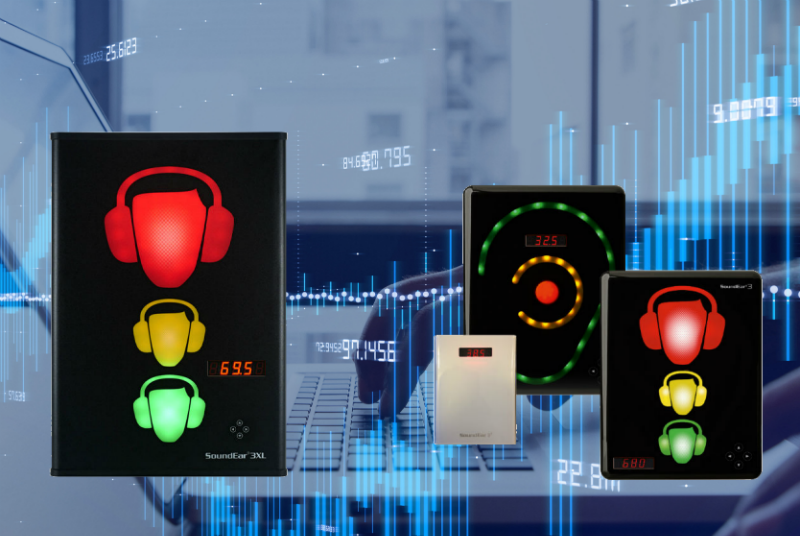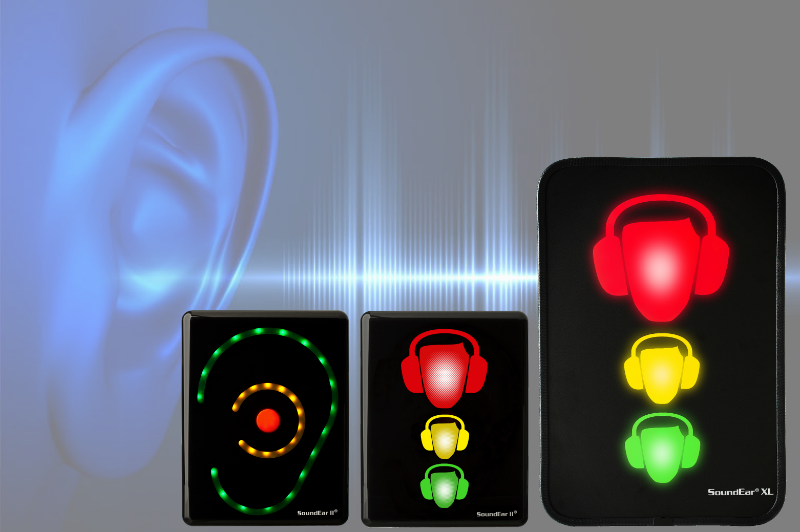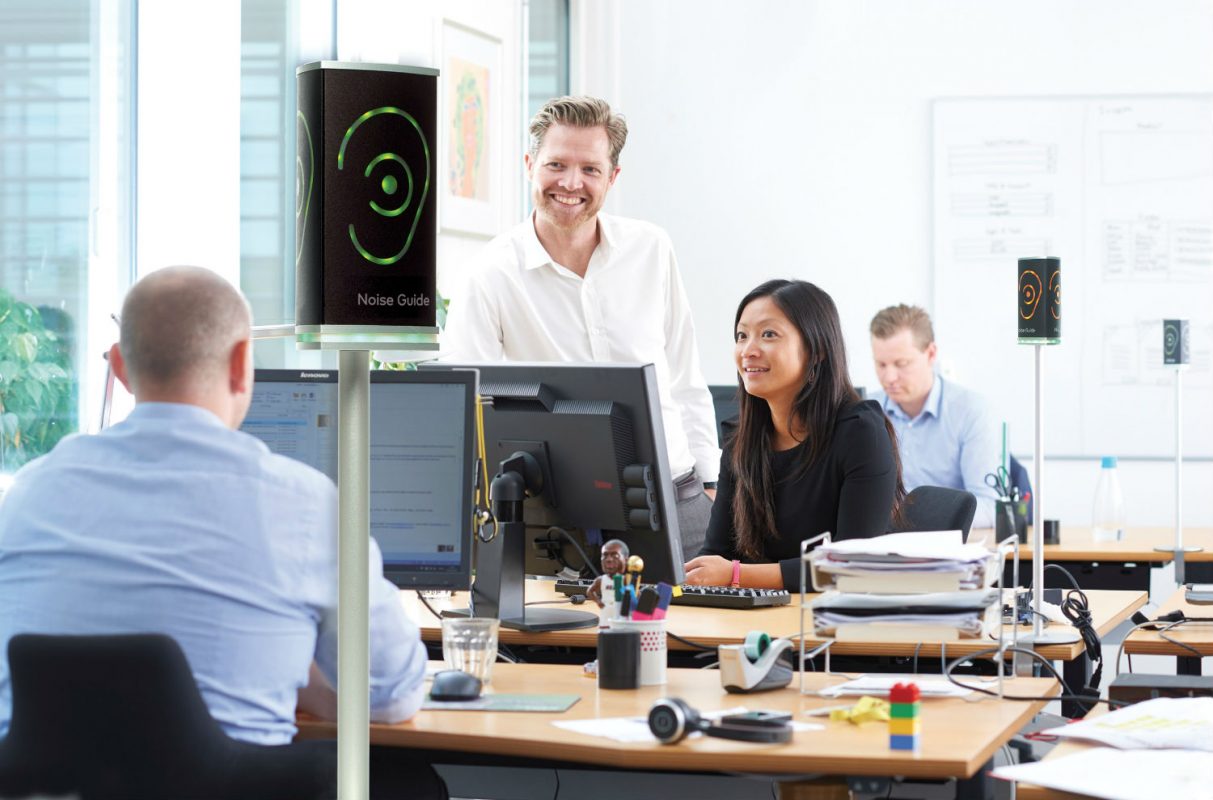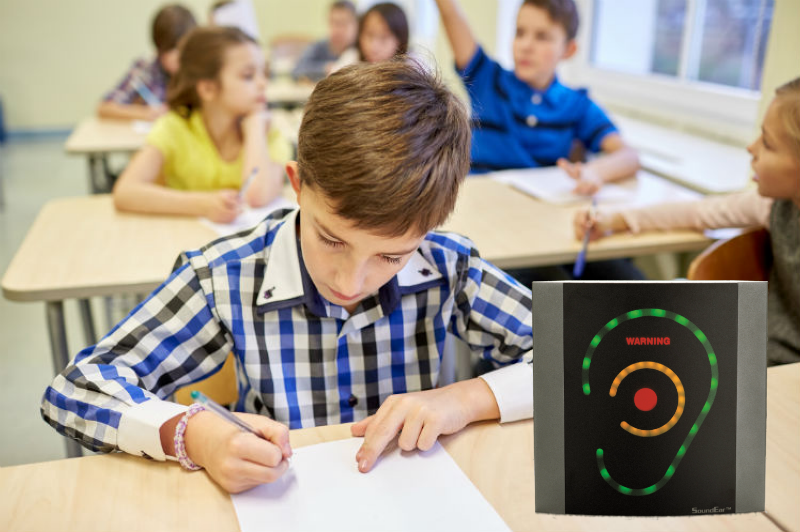No products in the cart.
Find the specific product you need support for below or scroll to our general FAQ section with answers to general questions about our products and noise.

SoundEar 3 Series
Used in hospitals, industrial- and construction workplaces and in external noise settings to:
- Make Noise Visible
- Make Precise Noise Measurements
- Analyze Noise Measurements
- Provide Documentation for Noise Levels

SoundEar II Series
Used in hospitals, gyms and industrial- and construction workplaces to:
- Make Noise Visible
- Reduce Noise Levels
- Remind Workers to Put on Earmuffs

Noise Guide
Used in open plan offices to:
- Make Noise Visible
- Reduce Office Noise and Interruptions
- Analyze Noise Measurements

SoundEar Classic
Used in schools and child care to:
- Make Noise Visible
- Reduce Noise Levels
FAQ about SoundEar Products and Noise in General
We have some frequently asked questions that are general about noise or relevant to most of our products. They are represented here. Product specific FAQs can be found on the relevant support page above.
Where do I place my SoundEar device?
The optimal placement of the SoundEar is:
- at a visible spot on the wall
- at 1,8 meters above ground
- at the opposite side of the room from the door
- not in a corner
- not close to any absorbent materials
- not close to noisy instruments
What is the recommended area for a SoundEar microphone to cover?
30-40 square meters
Can SoundEar products be used outside?
Yes, SoundEar II and SoundEar 3 products are IP42 certified, meaning that they are dust- and waterproof. They should however be under cover.
For an outdoor noise measurement system, take a look at our new SoundEar3-320X
Are SoundEar systems wireless?
Yes, SoundEar 3 products can be purchased with either a wireless radio signal or with WiFi. Go to the SoundEar3 page to learn more about the use of SoundEar3.
What is the warranty for SoundEar products?
There is a two year warranty on all SoundEar products.
Can I log my noise measurement data?
Yes. For the purpose of logging your noise measurement data, we recommend using one of the products in the SoundEar 3 Series, which has data logging as a standard feature, along with software to analyze and compare your data.
Can I analyze and document my noise measurements?
Yes. The products in our SoundEar 3 series come with the ability to log, analyze and document your noise measurement data, either manually by taking out the measurements as csv files or by using the included SoundEar Software.
How precise are SoundEar microphones/noise measurements?
For precise microphones and noise measurements, we recommend using the SoundEar 3 series, which offers a type II level microphone and a deviation of only 0.5 dB.
For an overview of the deviation on all of our products you can view the product matrix here.
What are the features of different SoundEar products?
For an overview of features for all SoundEar devices, download the product matrix here.
How big is the internal memory on your devices? And on your USB drives?
The internal memory of a SoundEar device is 16 MB.
The SoundEar USB drives have a memory of 8 GB.
Noise in general
How do I know what noise levels are acceptable in my particular setting?
We have created a guide, that gives examples of different situations and their typical noise ranges, which may help you figure out where your noise levels should be.
What can I do to reduce noise levels?
For tips and case stories about noise and noise reduction, visit the SoundEar blog.
What do abbreviations like LAeq, LAS max and dbA mean?
dbA is the normal weighted frequency for noise recording.
dbC is the higher tone noises, which are typically filtered out by the human ear.
LCpeak is the highest C weighted value measured within the period.
LAF max is the highest A weighted value measured within a second. Fast measurement.
LAS max is the highest A weighted value measured within a second. Slow measurement.
LAeq, 1s is the average noise level measured over 1 second. Slow measurement
For an overview of noise related terms and their definitions, see the acoustic glossary.
Please let us know if you have any questions that are not answered in the support pages. You can fill out the form below to let us know and we will get back to you as soon as possible.

 Dansk
Dansk Deutsch
Deutsch Svenska
Svenska